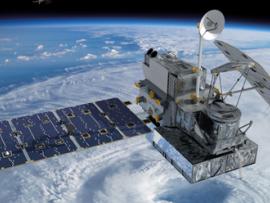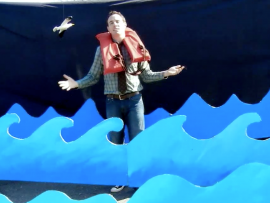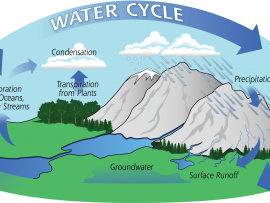Browse ESS2.A Resources
Browse ESS2.A Resources
Primary Topic:
Subtopics:
Type:
Keywords:
Summary:
Researchers need accurate and timely rainfall information to better understand and model where and when severe floods, frequent landslides and devastating droughts may occur, and GPM’s global rainfall data will help provide that information.
Primary Topic:
Subtopics:
Type:
Standards:
Summary:
This video, "Our Wet Wide World", provides an overview of the Global Precipitation Measurement Mission and its goals.
Primary Topic:
Subtopics:
Type:
Standards:
Keywords:
Summary:
The short video, 'For Good Measure' explains why scientists turn to satellites to get a worldwide view of rainfall.
Primary Topic:
Subtopics:
Type:
Keywords:
Summary:
This video (4:56) uses a combination of cartoon characters, a scientist, and a series of different Earth-observing satellites with data animations to teach the various parts of the water cycle.
Primary Topic:
Subtopics:
Type:
Summary:
In this webquest, you will learn a little about the GPM mission, and then will focus on the Earth’s water cycle.
Primary Topic:
Subtopics:
Type:
Keywords:
Summary:
Welcome to the Tour of the Electromagnetic Spectrum. This unique NASA resource on the web, in print, and with companion videos introduces electromagnetic waves, their behaviors, and how scientists visualize these data.
Primary Topic:
Subtopics:
Type:
Keywords:
Summary:
The activities in this guide will help students understand variations in environmental parameters by examining connections among different phenomena measured on local, regional and global scales.
Primary Topic:
Subtopics:
Type:
Standards:
Keywords:
Summary:
'Towers in the Tempest' is a 4.5 minute narrated animation that explains recent scientific insights into how hurricanes intensify. This intensification can be caused by a phenomenon called a 'hot tower'.
Primary Topic:
Subtopics:
Type:
Keywords:
Summary:
Learn how NASA uses a data-collecting sensor, Clouds and Earth’s Radiant Energy System, or CERES, to study clouds and make accurate measurements of energy leaving Earth.
Primary Topic:
Subtopics:
Type:
Keywords:
Summary:
This NASA video segment focuses on how scientists use satellites to collect data. These sets of data are then analyzed and used to predict storms.











